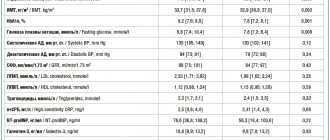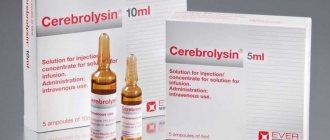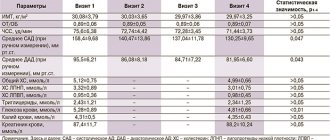References
- National clinical guidelines for the diagnosis, treatment and prevention of venous thromboembolic complications. Association of Phlebologists of Russia, 2013-2017. — 51 p.
- Zubairov, D.M. Molecular basis of blood coagulation and thrombus formation, 2000. - 360 p.
- Practical recommendations for the prevention and treatment of thromboembolic complications in cancer patients, 2022. - 10 p.
- Egan, G., Ensom, M. Measuring anti-factor xa activity to monitor low-molecular-weight heparin in obesity: a critical review. Can J Hosp Pharm., 2015. - Vol. 68(3). — P. 33-47.
- Berges, A., Laporte, S., Epinat, M. et al. PROPHRE.75 Study Group. Anti-factor Xa activity of enoxaparin administered at prophylactic dosage to patients over 75 years old. Br J ClinPharmacol., 2007. - Vol. 64(4). — P. 428-38.
- Guyton, C., Hall, E. Textbook of Medical Physiology. 13th Edition, 2015. - P. 1075-1093
Heparin
For therapeutic purposes, heparin is prescribed as a continuous intravenous infusion or as regular intravenous injections, as well as subcutaneously (in the abdominal area).
For prophylactic purposes - subcutaneously, 5000 IU / day, at intervals of 8-12 hours. The usual place for subcutaneous injections is the anterolateral wall of the abdomen (in exceptional cases, it is injected into the upper region of the shoulder or thigh), and a thin needle is used, which should be inserted deep, perpendicularly, into a fold of skin, held between the thumb and index finger until the solution is administered. The injection sites should be alternated each time (to avoid the formation of a hematoma).
The first injection must be performed 1-2 hours before the start of surgery; in the postoperative period - administered for 7-10 days, and if necessary - for a longer time.
The initial dose of heparin administered for therapeutic purposes is usually 5000 IU and is administered intravenously, after which treatment is continued using subcutaneous injections or intravenous infusions.
Maintenance doses are determined depending on the route of administration:
- for continuous intravenous infusion, 1000-2000 IU/hour (24000-48000 IU/day) is prescribed, diluting heparin with 0.9% sodium chloride solution;
- with regular intravenous injections, 5000-10000 IU of heparin is prescribed every 4-6 hours;
— for subcutaneous administration, 15,000-20,000 IU is administered every 12 hours or 8,000-10,000 IU every 8 hours.
Intravenous injections are recommended only for initial doses or if for some reason intravenous infusion or subcutaneous administration cannot be used. Repeated intravenous injections cause significant fluctuations in hemostasis and more often cause dangerous bleeding, so they are prescribed only when absolutely necessary.
For adults with thrombosis of mild to moderate severity, it is administered intravenously, 40,000-50,000 IU/day for 3-4 administrations; for severe thrombosis and embolism - 20,000 IU intravenously 4 times a day with an interval of 6 hours.
For health reasons, 25,000 IU is administered intravenously once, then 20,000 IU every 4 hours until the daily dose is 80,000-120,000 IU. When administered intravenously, at least 40,000 IU is added to the daily volume of infusion solution.
The duration of heparin therapy depends on the indications and route of administration. For intravenous use, the optimal duration of treatment is 7-10 days, after which therapy is continued with oral anticoagulants (it is recommended to prescribe oral anticoagulants starting from the 1st day of heparin treatment or from 5 to 7 days, and stop the use of heparin on the 4-5 day of combination therapy) . In case of extensive thrombosis of the iliofemoral veins, it is advisable to carry out longer courses of treatment with heparin.
Laboratory monitoring of the effectiveness and safety of sodium heparin therapy
The dose of heparin sodium should be adjusted based on laboratory blood clotting parameters. When using heparin sodium, it is necessary to monitor the activated partial thromboplastin time (aPTT) or blood clotting time (BCT). The administered dose of sodium heparin is considered adequate if the aPTT is 1.5 to 2.0 times the normal values or if the patient's ICR is 2.5 to 3.0 times the control values.
With continuous intravenous infusion of heparin sodium, it is recommended to determine the initial aPTT, then determine the aPTT every 4 hours, followed by increasing or decreasing the rate of infusion of heparin sodium until the target aPTT level is achieved (1.5-2 times higher than normal), then determine the aPTT every 6 hours .
When bolus intravenous administration of heparin sodium is recommended, it is recommended to determine the initial aPTT, then determine the aPTT before each bolus, followed by an increase or decrease in the administered dose of heparin sodium.
When administering sodium heparin subcutaneously, it is recommended to monitor the aPTT 4-6 hours after injection with a subsequent increase or decrease in the administered dose of sodium heparin.
When using sodium heparin in low doses to prevent thromboembolic complications, it is not necessary to monitor the aPTT.
Continuous intravenous infusion is the most effective way to use sodium heparin, better than regular (periodic) injections, because it provides more stable hypocoagulation and is less likely to cause bleeding.
Use of heparin sodium in special clinical situations
Primary percutaneous coronary angioplasty in acute coronary syndrome without ST-segment elevation and in myocardial infarction with ST-segment elevation: sodium heparin is administered intravenously as a bolus at a dose of 70-100 IU/kg (if the use of glycoprotein IIb/IIIa receptor inhibitors is not planned) or at a dose of 50 -60 IU/kg (when used together with inhibitors of glycoprotein IIb/IIIa receptors).
Thrombolytic therapy for myocardial infarction with ST segment elevation: sodium heparin is administered intravenously as a bolus at a dose of 60 IU/kg (maximum dose 4000 IU), followed by intravenous infusion at a dose of 12 IU/kg (not more than 1000 IU/hour) for 24- 48 hours. The target APTT level is 50-70 sec or 1.5-2.0 times higher than normal; APTT monitoring 3.6, 12 and 24 hours after the start of therapy.
Prevention of thromboembolic complications after surgery using low doses of sodium heparin: subcutaneously, deep into the fold of the abdominal skin. The initial dose is 5000 IU 2 hours before surgery. In the postoperative period: 5000 IU every 8-12 hours for 7 days or until the patient’s mobility is completely restored (whichever comes first). When using sodium heparin in low doses to prevent thromboembolic complications, it is not necessary to monitor the aPTT.
When preventing thrombus formation in the postoperative period, the first injection should be performed 1-2 hours before the start of surgery; in the postoperative period, administer for 7-10 days, and if necessary, for a longer period.
Use in cardiovascular surgery during operations using extracorporeal circulatory systems: the initial dose of sodium heparin is not less than 150 IU/kg body weight. Next, sodium heparin is administered by continuous intravenous infusion at a rate of 15-25 drops/min, 30,000 IU per 1 liter of infusion solution. The total dose of heparin sodium is usually 300 IU/kg body weight (if the expected duration of the operation is less than 60 minutes) or 400 IU/kg body weight (if the expected duration of the operation is 60 minutes or more).
Use in hemodialysis: initial dose of heparin sodium: 25-30 IU/kg (or 10,000 IU) intravenous bolus, then continuous infusion of heparin sodium 20,000 IU/100 mg sodium chloride solution at a rate of 1500-2000 IU/hour (unless otherwise indicated in guidelines for the use of hemodialysis systems).
Use in Pediatrics: Adequate controlled studies of the use of heparin sodium in children have not been conducted. The recommendations presented are based on clinical experience.
Initial dose: 75-100 IU/kg IV bolus over 10 minutes.
Maintenance dose: children aged 1-3 months - 25-30 IU/kg/hour (800 IU/kg/day), children aged 4-12 months - 25-30 IU/kg/hour (700 IU/kg/day day), children over 1 year - 18-20 IU/kg/hour (500 IU/kg/day) intravenously.
The dose of heparin sodium should be adjusted based on blood coagulation parameters (target aPTT 60-85 seconds).
Switching to warfarin therapy : To ensure a sustained anticoagulant effect, therapy with heparin sodium at full dose should be continued until a stable target INR level is achieved. After this, the administration of sodium heparin must be stopped.
Switching to dabigatran therapy: Continuous intravenous heparin sodium should be discontinued immediately after the first dose of dabigatran. With fractional intravenous administration, the patient should take the first dose of dabigatran orally 1-2 hours before the scheduled administration of the next dose of sodium heparin.






